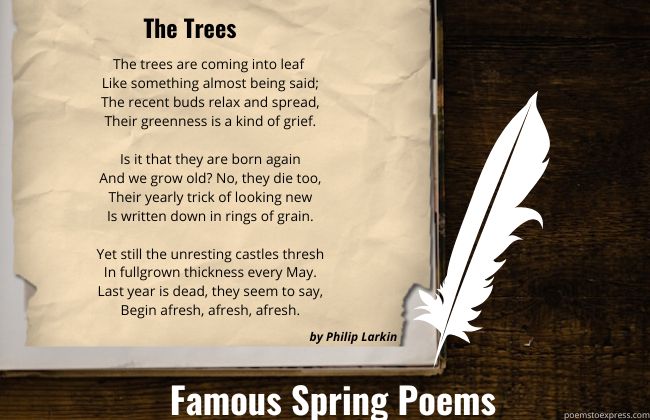Limerick poems are a poetic form that has managed to capture the attention of readers of all ages with their wit, humor, and unique structure.

Originating in Ireland, these brief poems consist of five verses with an AABBA rhyme scheme and a predominant rhythm that gives them the playful and musical air that characterizes them.
Although often associated with humorous or even absurd themes, limericks have a versatility that allows them to touch a wide range of emotions and concepts.
With a rich history that includes famous poets like Edward Lear, limericks remain a beloved form of expression today.
In this post, we invite you to discover the magic of limericks through a selection of the ten best poems, each accompanied by an analysis that highlights the subtleties of the language and the skill of their most distinguished authors.
Table of Contents
- 1 Structure and Rhyme Scheme
- 2 1) ‘There Was a Young Lady of Norway’ – Algernon Charles Swinburne
- 3 2) “A wonderful bird is the pelican” – Dixon Lanier Merritt
- 4 3) There Once Was a Man from Nantucket” by Dayton Voorhees
- 5 4) There was an Old Man with a beard” – Edward Lear
- 6 5) ‘There Was an Old Man of the Cape’ – Robert Louis Stevenson
- 7 6) ‘There Was a Young Man of Oporta – Lewis Carroll
- 8 7) ‘There Was a Young Man of Montrose by Arnold Bennett
- 9 8) A Canner, Exceedingly Canny by Carolyn Wells
- 10 9) There was an Old Man in a tree” – Edward Lear
- 11 10) ‘There was an Old Man with a nose’ – Edward Lear
- 12 Origin and History of Limericks
- 13 Creative Uses of Limericks
Structure and Rhyme Scheme
The structure of a limerick consists of five lines. The rhyme scheme follows an AABBA pattern. The first, second, and fifth lines typically contain eight or nine syllables, while the third and fourth lines are shorter, with five or six syllables.
This unique rhythm adds to the sing-song quality of the poem. The meter is generally anapestic or amphibrachic, allowing for a quick and bouncy cadence. The defining feature is the content’s humor, often absurd or exaggerated, which lends the limerick its charm and then concludes with a witty punchline.

1) ‘There Was a Young Lady of Norway’ – Algernon Charles Swinburne
There was a young lady of Norway
Who hung by her toes in a doorway.
She said to her beau
‘Just look at me Joe,
I think I’ve discovered one more way.
The poem “There Was a Young Lady of Norway” by Algernon Charles Swinburne is a limerick that humorously describes a young lady hanging by her toes in a doorway, demonstrating her agility to her beau.
She excitedly tells him that she’s found a new way to do something, likely to impress him. This limerick showcases Swinburne’s witty use of language, characterized by its playful rhythm and rhyme.
2) “A wonderful bird is the pelican” – Dixon Lanier Merritt
“A wonderful bird is the Pelican.
His beak can hold more than his belly can.
He can hold in his beak
Enough food for a week!
But I'll be darned if I know how the hellican?”
The poem “A wonderful bird is the pelican” by Dixon Lanier Merritt is a humorous limerick that marvels at the pelican’s unique natural ability to hold a large amount of food in its beak—more than seems logically possible. The poem plays on the physicality of the pelican, specifically its large bill, to create a light-hearted and amusing observation that culminates in a playful linguistic twist.
Merritt’s use of clever wordplay with “belican” and “helican” emphasizes the surprising and comical nature of the bird’s feeding capabilities, making the limerick memorable and engaging.
The poem is typical of limericks in its rhythmic and rhyming structure, providing a whimsical look at the natural world
3) There Once Was a Man from Nantucket” by Dayton Voorhees
There once was a man from Nantucket
Who kept all his cash in a bucket.
But his daughter, named Nan,
Ran away with a man
And as for the bucket, Nantucket.
The poem “There Once Was a Man from Nantucket” by Dayton Voorhees is known for its rhythmic structure and playful twist ending that plays with the expectations of the readers using the wordplay involving the location Nantucket.
This limerick begins with a man who keeps his cash in a bucket and continues with a brief, humorous narrative about his daughter and an event that changes the situation with the money and the bucket.
Limericks like this are cherished for their humor and their ability to subvert conventional poetic norms, delivering entertainment rather than a profound message
4) There was an Old Man with a beard” – Edward Lear
There was an Old Man with a beard,
Who said, 'It is just as I feared!
Two Owls and a Hen,
Four Larks and a Wren,
Have all built their nests in my beard!'
In this poem, the peculiar situation of an old man whose beard becomes a nesting place for various birds is described, illustrating the author’s wit and imagination.
This limerick uses a traditional structure that enhances its comic effect through an AABBA rhyme scheme and a specific rhythmic pattern.
Lear uses the beard as a metaphorical canvas to explore themes of invasion and unexpected consequences, while playing with the literal idea of birds making a home in an unusual place.
This poem reflects Lear’s unique style, which combines the absurd with the mundane to create a charmingly silly piece that resonates with readers of all ages.
5) ‘There Was an Old Man of the Cape’ – Robert Louis Stevenson
There was an old man of the Cape
Who made himself garments of crepe.
When asked, "Do they tear?"
He replied, "Here and there,
But they're perfectly splendid for shape!"
The poem “There Was an Old Man of the Cape” by Robert Louis Stevenson is a limerick that plays with the whimsical theme of a man making clothes out of crepe fabric.
When questioned about the durability of his garments, he admits they tear “here and there” but humorously affirms their excellent fit and form.
This limerick showcases Stevenson’s knack for blending humor with light-hearted critique, possibly poking fun at the fashion norms or the impracticality of appearances.
The poem follows the typical limerick structure, which is intended to amuse with its rhythmic and rhyming pattern, characteristic of Stevenson’s playful literary style.

6) ‘There Was a Young Man of Oporta – Lewis Carroll
There was once a young man of Oporta,
Who daily got shorter and shorter,
The reason he said
Was the hod on his head
Which was filled with the heaviest mortar.
The poem is a limerick that humorously depicts the unexpected consequences for a young man caused by the heavy load he carries on his head.
As typical of Carroll’s work, this limerick combines absurd humor with clever wordplay, reflecting his signature style of nonsensical literature.
Carroll’s limerick structure and word choices work together to vividly and humorously illustrate a scenario that captures the essence of the literary style he popularized with works like “Alice’s Adventures in Wonderland”.
Through this short poem, Carroll engages with the ridiculous, evoking laughter and contemplation about the absurdity of the described situation.
7) ‘There Was a Young Man of Montrose by Arnold Bennett
There was a young man of Montrose,
Who had pockets in none of his clothes,
When asked by his lass
Where he carried his brass,
He said, Darling, I pay through the nose.
The poem “There Was a Young Man of Montrose” by Arnold Bennett is a limerick that plays with humor through clever wordplay.
It describes a young man who has no pockets in his clothes, creating a comical and peculiar image. The young man’s girlfriend asks how he manages his money, to which he responds with a double entendre: “I pay through the nose.”
This phrase not only means to pay excessively but also humorously suggests an alternative to lacking pockets for carrying his money. Bennett showcases his skill in verbal wit and building humor from everyday situations and idiomatic expressions.
8) A Canner, Exceedingly Canny by Carolyn Wells
A canner exceedingly canny
One morning remarked to his granny:
"A canner can can
Any thing that he can
But a canner can't can a can, can he?"
The poem “A Canner, Exceedingly Canny” by Carolyn Wells is a limerick that plays with words and concepts in a clever and humorous way.
This poem features a canny canner who contemplates the limits of his craft with his grandmother.
Through a simple dialogue, the canner rhetorically asks whether, despite being able to can anything he can, he can can a can itself, highlighting the wordplay between the verb “can” (to preserve food in cans) and the noun “can” (a container).
This limerick is notable for its classic rhythmic structure and humorous punchline, typical of the best examples of this poetic form.
9) There was an Old Man in a tree” – Edward Lear
There was an Old Man in a tree,
Who was horribly bored by a bee.
When they said "Does it buzz?"
He replied "Yes, it does!
It's a regular brute of a bee!"
The poem is about an old man who sits in a tree and is annoyed by a bee. When asked if the bee buzzes, he confirms, describing it as a “regular beast.”
This limerick is noted for its humorous tone and the vivid image it creates of the old man facing a small but bothersome bee, all within the typically playful and absurd framework that characterizes Lear.
This poem not only entertains but also paints a peculiar scene with comedic elements and a touch of human frustration in the face of nature’s annoyances.
10) ‘There was an Old Man with a nose’ – Edward Lear
here was an Old Man with a nose,
Who said, "If you choose to suppose
That my nose is too long,
You are certainly wrong!"
That remarkable man with a nose.
Edward Lear’s limerick “There was an Old Man with a nose” showcases his distinctive approach to humor and rhyme.
The poem features an eccentric character who defends the length of his nose with confidence, emphasizing Lear’s ability to blend absurdity with charm.
This playful rhyme has been a favorite among readers for its whimsical nature and lighthearted tone. It exemplifies Lear’s talent for creating memorable and amusing verses.
Origin and History of Limericks
Limericks are believed to have originated in 18th-century Ireland, though their name is often associated with the city of Limerick.
Edward Lear, an English artist and writer, played a significant role in popularizing limericks through his “Book of Nonsense” published in the 19th century. Lear’s work illustrated the playful and nonsensical essence of limericks.
Before Lear’s influence, the poetry form existed in folk traditions. Over time, these rhymes became a staple in English-speaking cultures. Their memorable style contributed to their lasting appeal, providing a platform for both humor and social commentary.
Creative Uses of Limericks
Limericks have found their place in both educational settings and modern media, demonstrating their versatility and charm.
These short, witty poems captivate audiences with their unique structure and humor, making them a popular choice in various contexts.
Limericks in Education
In educational settings, limericks serve as an engaging tool to teach language, rhythm, and rhyme. Teachers often use them to introduce students to poetry because of their simple structure and entertaining nature.
The five-line format with a particular rhyme scheme (AABBA) encourages learners to explore creative expression while adhering to structured guidelines. Students can enhance their vocabulary and phonemic awareness as they experiment with wordplay and syllables.
Limericks also foster a playful learning environment. By encouraging students to write their own limericks, educators prompt critical thinking and creativity. This approach not only improves literary skills but also enhances overall engagement and participation in the classroom.
Use in Modern Media
Limericks have made their mark in modern media, appearing in advertising, television, and social media. Companies utilize these poems to create catchy and memorable marketing campaigns that resonate with audiences.
Their brevity and humor make limericks excellent for crafting impactful messages in advertisements or promotional material. In television shows, limericks are often used for comedic relief or to convey character traits creatively.
You might also like:






